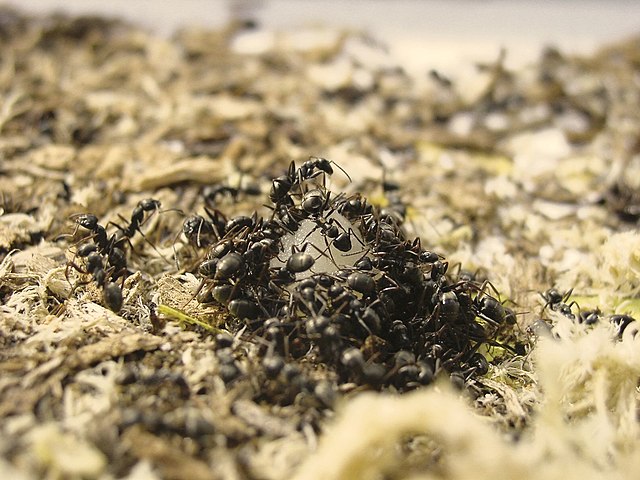The European hornet is the largest eusocial wasp native to Europe. It is also the only true hornet found in North America, having been introduced to the United States and Canada from Europe as early as 1840. Vespines, such as V. crabro, are known for making intricate paper-like nests out of surrounding plant materials and other fibers. Unlike most other vespines, reproductive suppression involves worker policing instead of queen pheromone control, as was previously thought.
European hornet
V. crabro form "vexator" – British form with an almost yellow head
Nest
European hornet with prey (a honey bee)
Worker policing is a behavior seen in colonies of social hymenopterans whereby worker females eat or remove eggs that have been laid by other workers rather than those laid by a queen. Worker policing ensures that the offspring of the queen will predominate in the group. In certain species of bees, ants and wasps, workers or the queen may also act aggressively towards fertile workers. Worker policing has been suggested as a form of coercion to promote the evolution of altruistic behavior in eusocial insect societies.
Worker policing is found in honey bees and other hymenopterans including some species of bumblebees, ants and wasps.
Formica fusca ants can recognize nest-mates
Apis mellifera workers remove worker-laid eggs by eating them (oophagy)
Worker of Harpegnathos saltator killing a foreign queen








